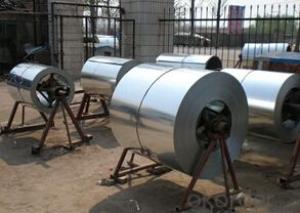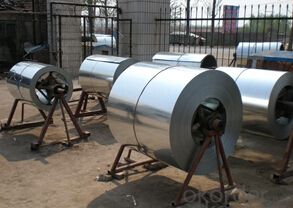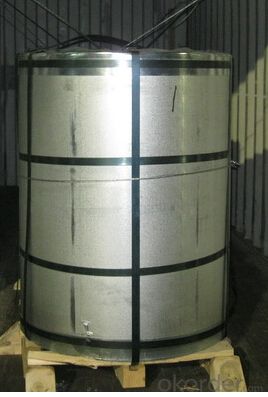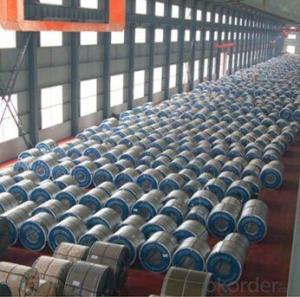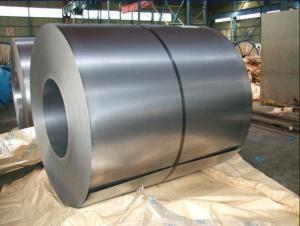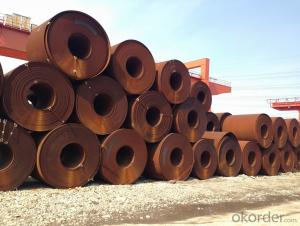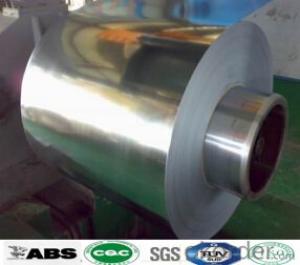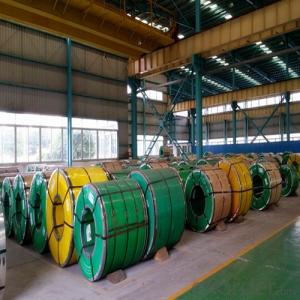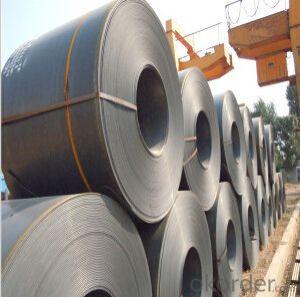Hot Rolled Steel Coil for Construction (1250*3)
- Loading Port:
- Tianjin
- Payment Terms:
- TT OR LC
- Min Order Qty:
- 25 m.t.
- Supply Capability:
- 10000 m.t./month
OKorder Service Pledge
OKorder Financial Service
You Might Also Like
Description:
Model NO.:1250mm*3mm
Surface Treatment:Galvanized
Certification:ISO, SGS
Technique:Hot Rolled
Standard:ASTM, JIS, GB, AISI, DIN, BS
Application:Boiler Plate
Edge:Slit edge
Stock:Stock
Steel Grade:Q235B
1250*3:Mm
Export Markets:Global
Additional Info.
Packing:Bundled
Standard:ISO, SGS
Origin:Changzhou Jiangsu China (Mainland)
HS Code:72191200
Production Capacity:100000tons Per Year
Standard: AISI, ASTM, BS, DIN, GB, JIS
Steel Grade: Q235B
Thickness: 1.2mm-20mm
Place of Origin: Changzhou China (Mainland)
Technique: Hot Rolled
Application: Making pipes, etc.
Brand Name: SS400B, Q195, Q235, SPHC, SPHT1
Width: 900mm-2000mm
Length: Coils
Packaging & Delivery
Packaging Detail: Standard package
Delivery Detail: Within 7-15days after we receive your deposit
| Standard | AISI, ASTM, BS, DIN, GB, JIS, |
| Grade | Q195/Q235/Q345/45# |
| Thickness | 2.50,2.70,2.75,2.8,2.9,2.95,3.0,3.25,3.3,3.5,3.75,3.8,3.9,3.95,4,4.25,4.5,4.7,4.75,5,5.5,5.75, 6,6.75,7,7.5,7.75,8,8.75,9,9.5,9.75,10,10.5,11,11.5,12 ,15.75 |
| Width | 685/735/1010/1250/1500/1800/2000mm |
| Coil Weight | 685/735 __6.5 T 1250 __16.5T 1500 __27.5T 1800/2000__32.5T |
| Application | construction, household appliance, Automobile, light industry, etc |
| Packaging | Standard package, suitable for transportation. |
| Delivery | Within 30 days after contract signed |
| Payment term | T/T or L/C |
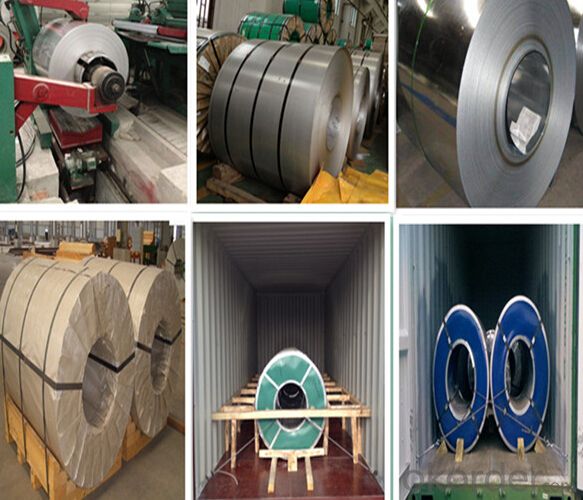
FAQ
1.What's your MOQ?
25MT, it is for one container.
2.Do you have QC teams?
Yeah, sure, our QC team is very important, they will keep the quality control for our products.
3. What's your normal delivery time?
Our delivery time about 10-20days for standard sizes, if you have other requirements like hardness and width ,it is about 20-40days. But don't worry ,we also try our best for the delivery time ,because time longer and our cost is higher.
4.Are the products tested before shipping?
Yes, all of our PPGI and GI was qualified before shipping. We test every batch every day
- Q: Hi my dad bought a stain steel refridg. yesterday, and we went to clean it and it looks all streaky and gets finger prints and stuff on it too easily we used mr clean multisurface cleaner and it didnt work to well is there a certain type of cleaner we are supposed to use?
- Stainless Steel Magic works well. If there are no small kids in the house, use a little bit of WD-40 to get some of the bad stuff off, it will shine it up really well. It's not an everyday solution, but it works. Stainless Steel will always pick up fingerprints. There's not much you can do about that.
- Q: What are the dimensions of steel coils used in the storage system industry?
- The dimensions of steel coils used in the storage system industry vary depending on the specific requirements of the storage system and the industry it is used in. However, common dimensions for steel coils used in storage systems can range from 0.15mm to 3.5mm in thickness, and from 600mm to 2100mm in width. The length of the coils can also vary, typically ranging from 1000mm to 6000mm.
- Q: What are the pros and cons to selecting a graphite shaft sand wedge over steel shaft?
- The way to resolve the selection is to go with the shaft that matches the other clubs in your set. If you have steel shafted irons go with steel. You will find the similar feel when you hit shots is most important.
- Q: Can steel coils be used in the food processing industry?
- Indeed, the food processing industry can utilize steel coils. These coils frequently serve as the foundation for a diverse array of food processing equipment, including conveyor belts, food storage tanks, mixing tanks, and processing machinery. Steel, characterized by its durability and hygienic properties, possesses resistance against corrosion, rendering it appropriate for deployment in food processing environments. Furthermore, steel coils facilitate effortless cleaning and sanitization, guaranteeing the safety and cleanliness of the food processing equipment. In conclusion, owing to their robustness, longevity, and adherence to food safety regulations, steel coils enjoy widespread employment within the food processing industry.
- Q: What are the different types of steel coil leveling methods?
- There are three main types of steel coil leveling methods: roller leveling, stretcher leveling, and temper leveling. Roller leveling involves passing the coil through a series of rollers to reduce its curvature and improve flatness. Stretcher leveling uses hydraulic or mechanical stretching to remove the coil's internal stresses and straighten it. Temper leveling, on the other hand, subjects the coil to a controlled heating and cooling process to achieve the desired flatness. Each method has its own advantages and is chosen based on the specific requirements of the steel coil.
- Q: How many millimeters is a number 3 steel crochet hook?
- In the rest of the world, a #3 hook is 6.5 mm. But the thing to do is use the hook size according to the yarn you are using. You would never follow the pattern exactly for hook size, you know that! You must do a gauge swatch to find out what YOUR tension is, and if that yarn will make the kind of fabric YOU want. You need to do a little research on this... as you know. Don't you remember your first lesson when you took your basic beginner class? Review your notes.
- Q: How are steel coils used in the production of agricultural machinery parts?
- Steel coils are used in the production of agricultural machinery parts as they provide a durable and strong material for manufacturing components such as plow blades, tiller tines, and harvesting machine components. The steel coils are typically cut, shaped, and welded to create the necessary parts that can withstand the harsh conditions and heavy-duty operations involved in agricultural activities.
- Q: I have the game of the year edition for fallout 3 but there's no mission or quest saying it's called broken steel so what is it actually called and where is it? Please describe the quest in case I mightve already done it without even knowing.
- If I can remember right (SPOILER) you have to beat the game and instead of dying you just pass out and wake up with the brother hood of steel.
- Q: What are the challenges in storing and handling steel coils?
- Storing and handling steel coils pose several challenges due to their size, weight, and potential risks associated with their transportation and storage. Some of the challenges include: 1. Space requirements: Steel coils are generally large and bulky, requiring ample storage space. Finding suitable storage facilities that can accommodate the size and weight of the coils can be a challenge, especially in urban areas where space is limited. 2. Weight and handling: Steel coils can weigh several tons, making them difficult to handle safely. Specialized equipment such as cranes or forklifts with sufficient lifting capacity is necessary for moving and positioning the coils without causing damage or injury. 3. Stackability: Storing steel coils in a safe and efficient manner requires careful consideration of their stackability. Coils must be stacked in a way that prevents deformation or damage to the lower coils, ensuring stability and minimizing the risk of toppling. 4. Corrosion prevention: Steel coils are susceptible to corrosion, especially when exposed to moisture or harsh environmental conditions. Implementing proper corrosion prevention measures, such as protective coatings or climate-controlled storage, is crucial to maintain the quality and integrity of the coils. 5. Safety risks: Handling steel coils can be dangerous, as they can shift unexpectedly during transportation or storage. This poses a risk to workers involved in the handling process. Adequate training, appropriate personal protective equipment (PPE), and strict safety protocols are essential to minimize the potential for accidents or injuries. 6. Transportation challenges: Transporting steel coils from manufacturing facilities to storage facilities or end-users can be logistically complex. Coordinating the loading, securing, and unloading of the coils onto trucks or shipping containers requires careful planning and adherence to safety regulations. 7. Quality control: Steel coils must be stored and handled in a way that maintains their quality. Any mishandling or improper storage conditions can lead to deformations, scratches, or other defects that can affect the performance and value of the steel. Overall, the challenges in storing and handling steel coils require attention to detail, proper equipment, and adherence to safety protocols to ensure the integrity of the product, the safety of workers, and the efficiency of operations.
- Q: What are the challenges in coil blanking for complex shapes?
- In order to achieve accurate and efficient results, there are several challenges that need to be addressed when it comes to coil blanking for complex shapes. One of the main challenges lies in the precise positioning and alignment of the coil material. When dealing with complex shapes, intricate cutting patterns are often required, and any misalignment or deviation can result in inaccurate cuts and wasted material. Another challenge involves the selection and optimization of the blanking tooling. Specialized dies and punches are often necessary for complex shapes, and these need to be carefully designed and manufactured to ensure accuracy and consistency. This not only involves choosing the right tooling materials but also considering factors such as cutting forces, wear resistance, and tool life. The complexity of the shapes also presents challenges in terms of material deformation and springback. During the blanking process, the material undergoes various deformations and stresses, which can cause distortions and dimensional variations in the final product. Achieving the desired shape while minimizing these deformations requires a deep understanding of material properties and advanced techniques like compensation and adjustment in the die design. Furthermore, the high-speed nature of coil blanking for complex shapes can result in increased vibration and noise levels. The dynamic forces involved in cutting intricate shapes can lead to tool chatter and excessive noise, affecting both the quality of the cut and overall operational efficiency. It is vital to implement effective damping and vibration control measures, such as tool coatings and optimized cutting parameters, to address these challenges. Lastly, the complexity of the shapes can impact production efficiency. Complex shapes often require longer tool setup times and more frequent tool changes, leading to increased downtime and reduced productivity. Additionally, the intricate nature of the cuts may require multiple passes or additional machining operations, further adding to the production time and complexity. To overcome these challenges, manufacturers need to invest in advanced technologies like computer-aided design and simulation software to optimize the blanking process. Continuous research and development efforts focused on improving tooling materials, cutting techniques, and process control can also help address the challenges associated with coil blanking for complex shapes.
Send your message to us
Hot Rolled Steel Coil for Construction (1250*3)
- Loading Port:
- Tianjin
- Payment Terms:
- TT OR LC
- Min Order Qty:
- 25 m.t.
- Supply Capability:
- 10000 m.t./month
OKorder Service Pledge
OKorder Financial Service
Similar products
Hot products
Hot Searches
Related keywords
